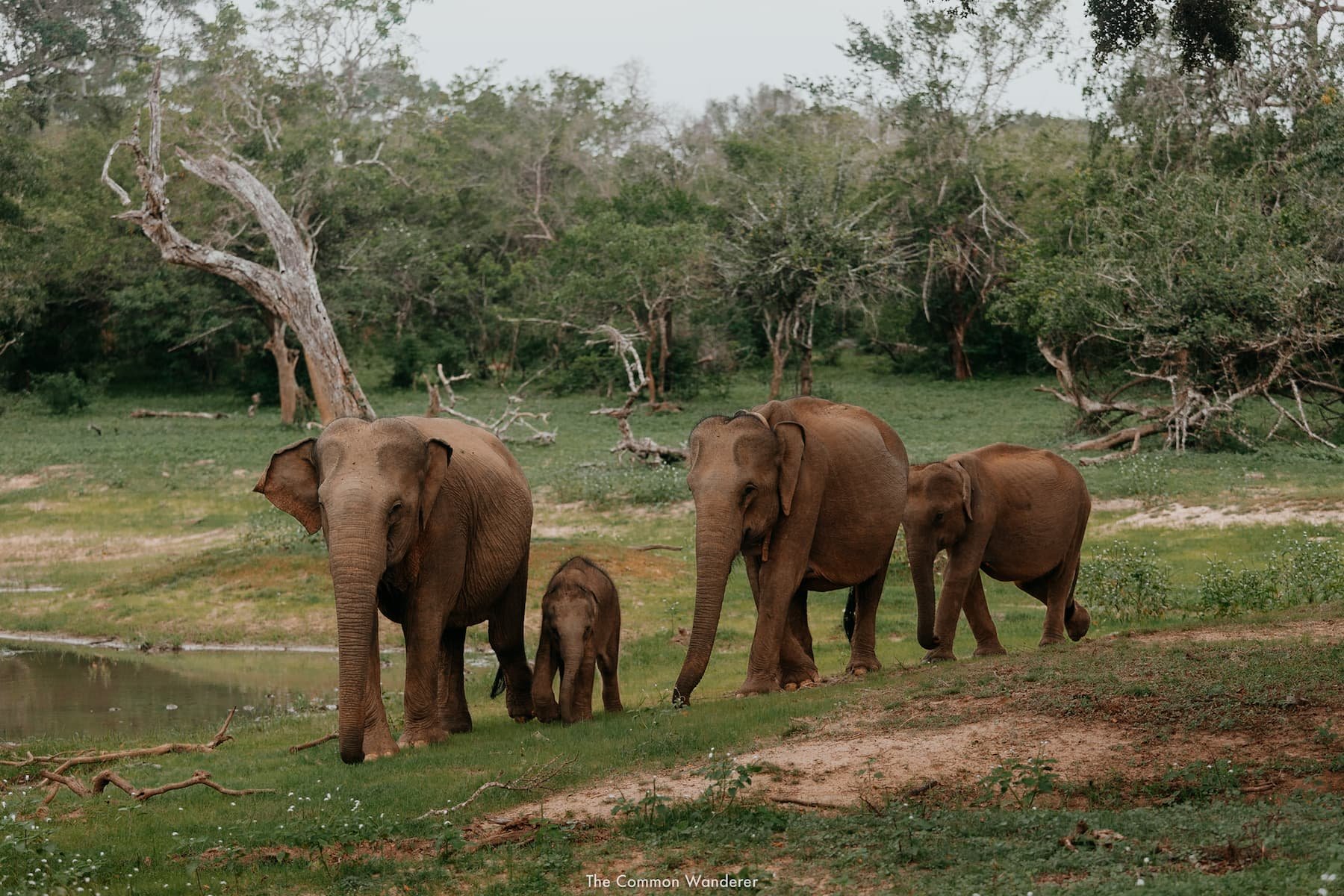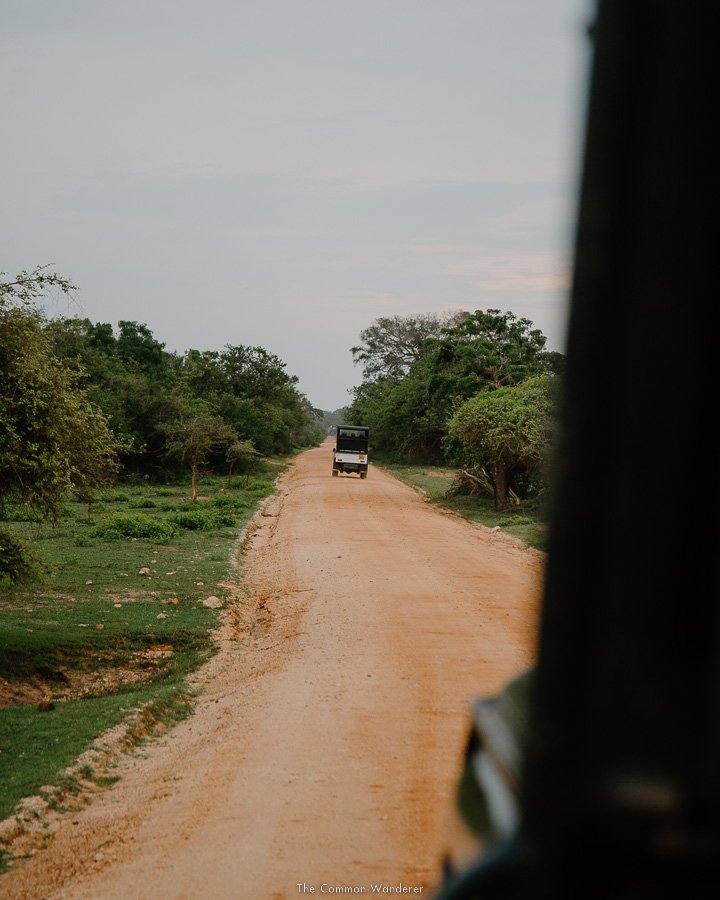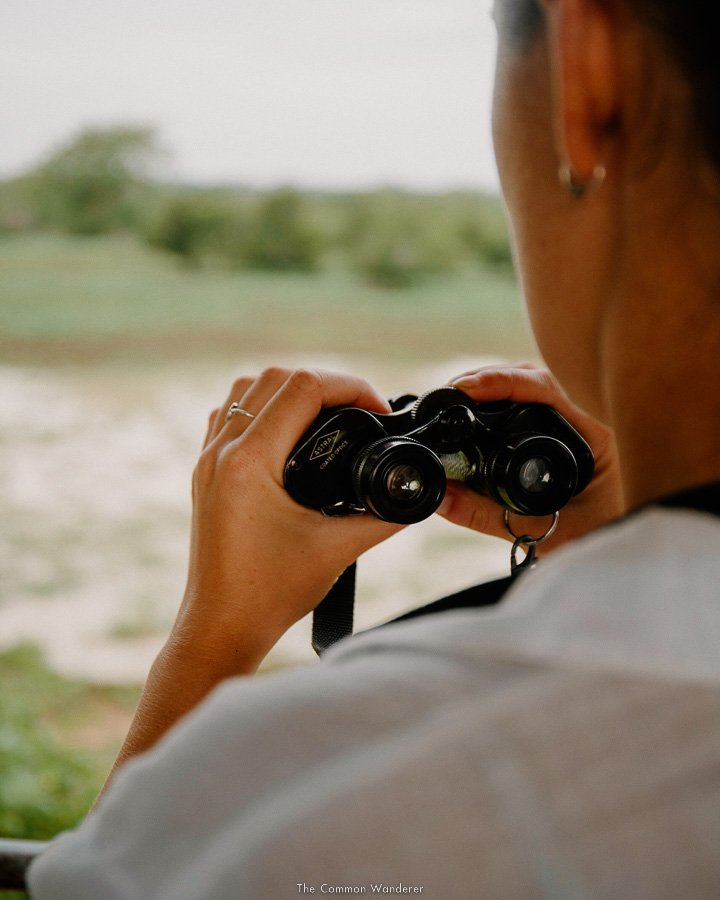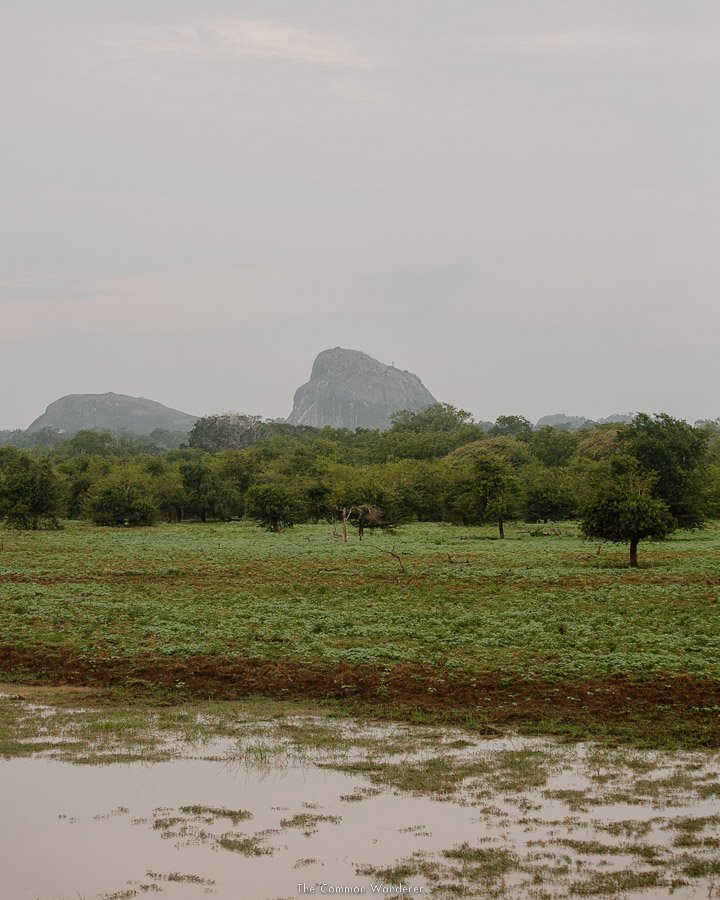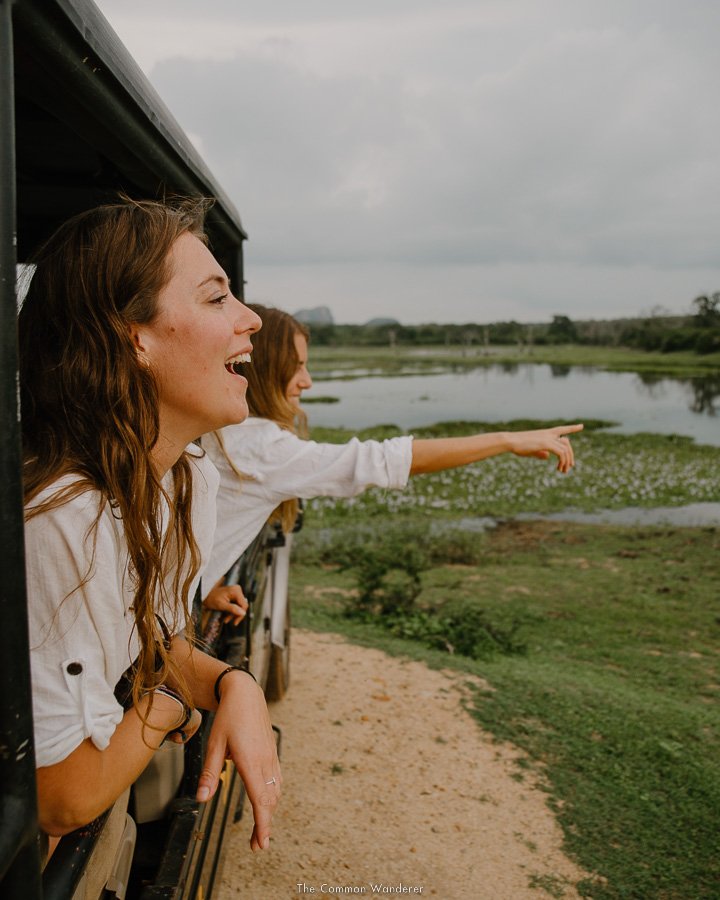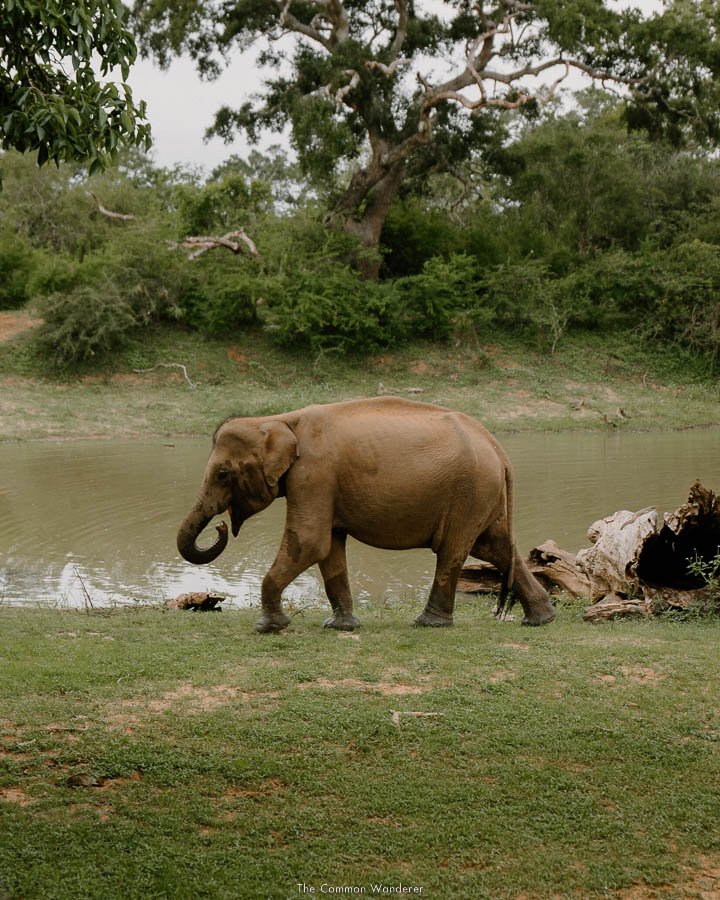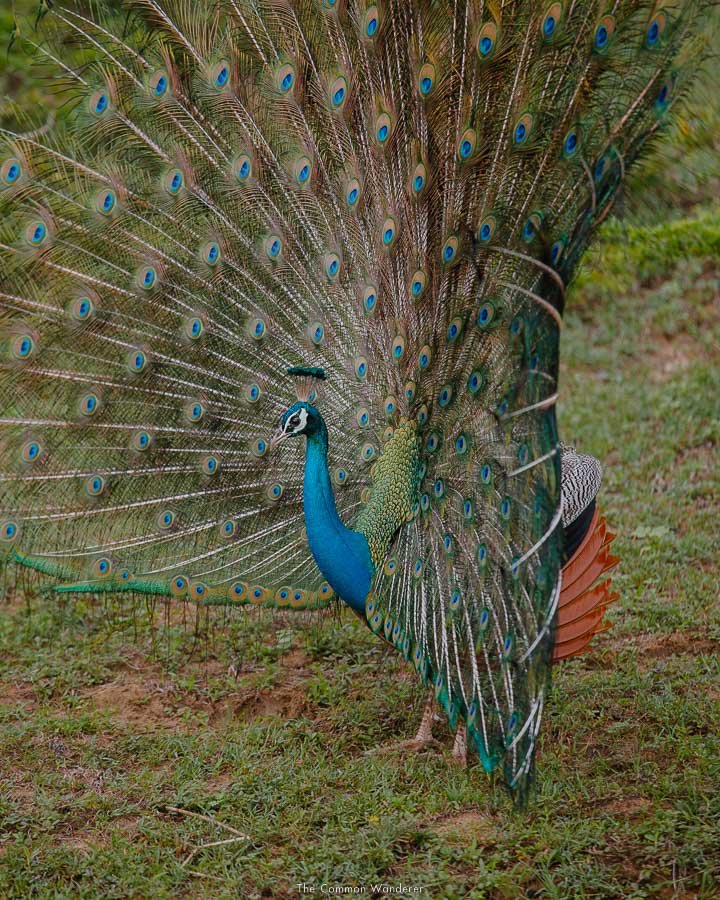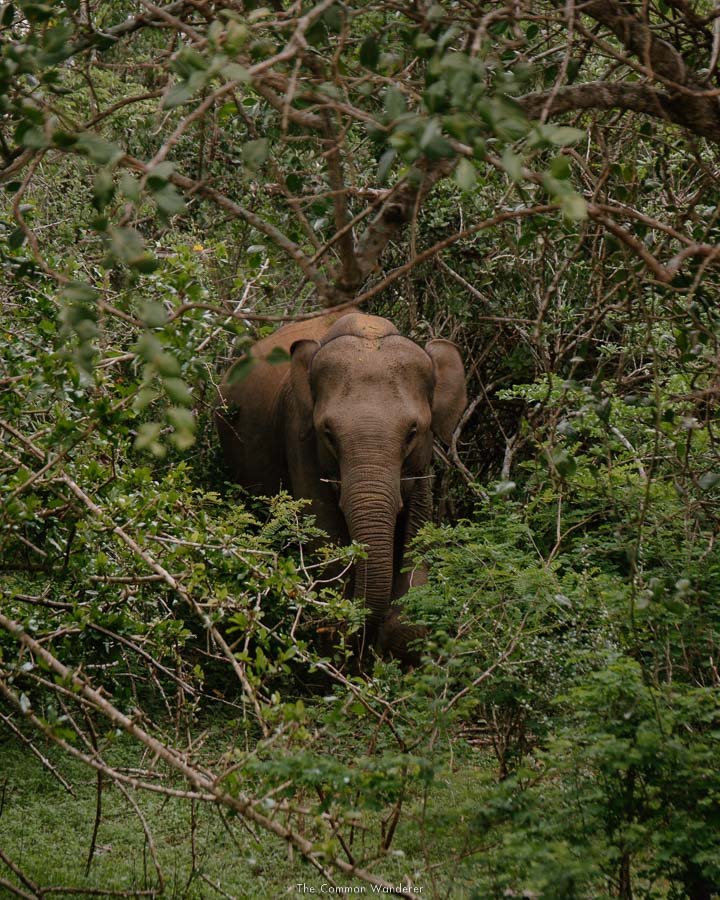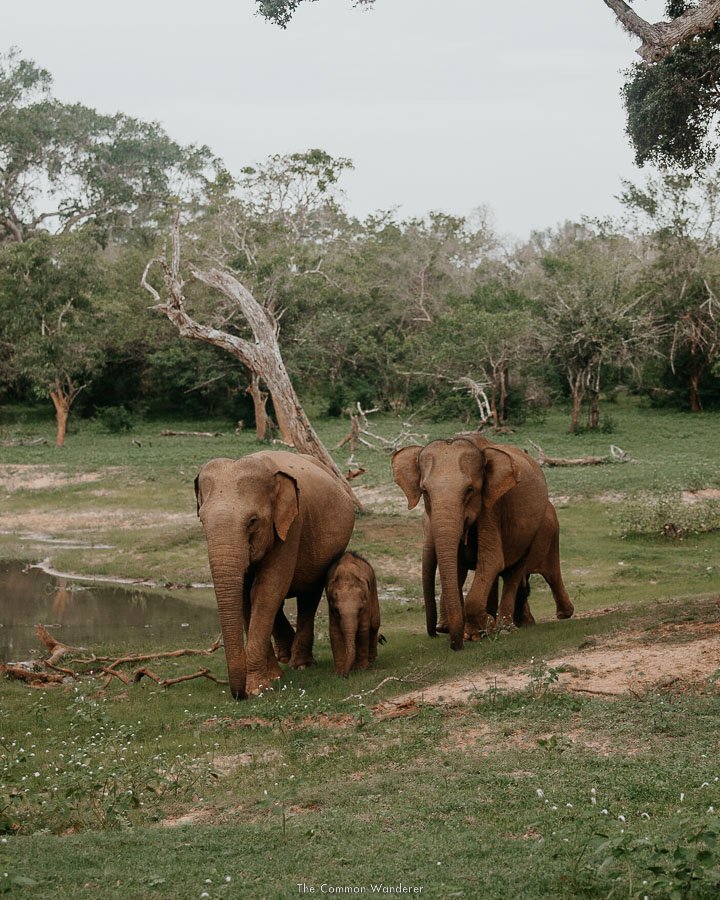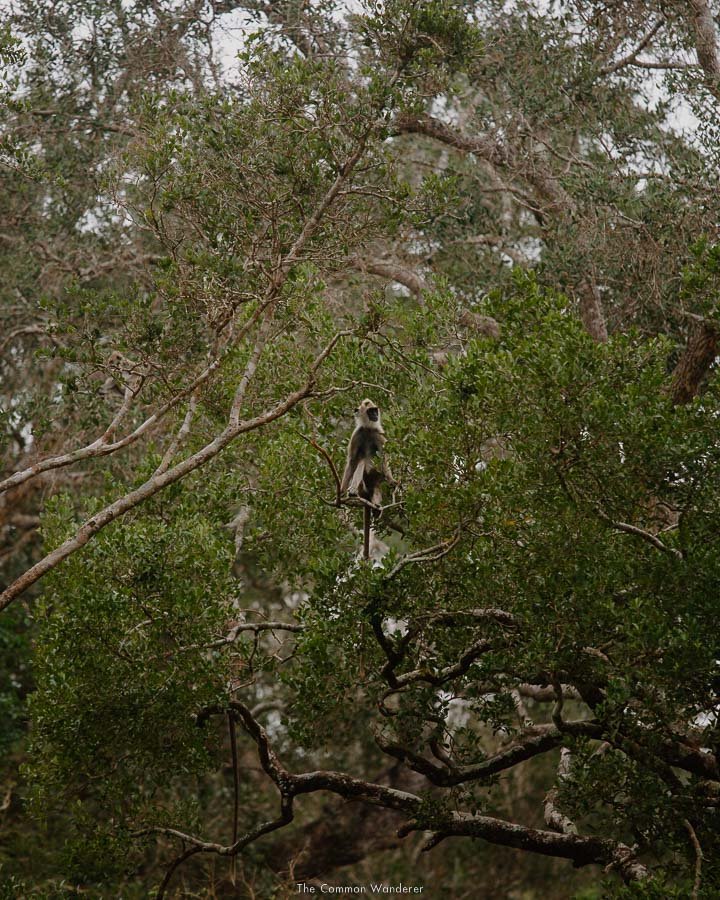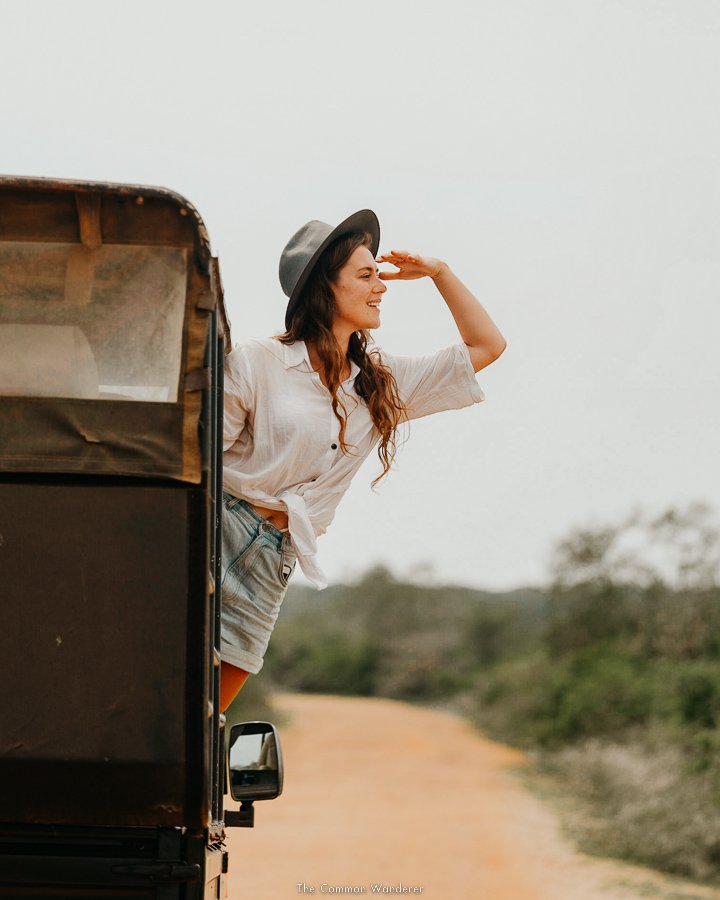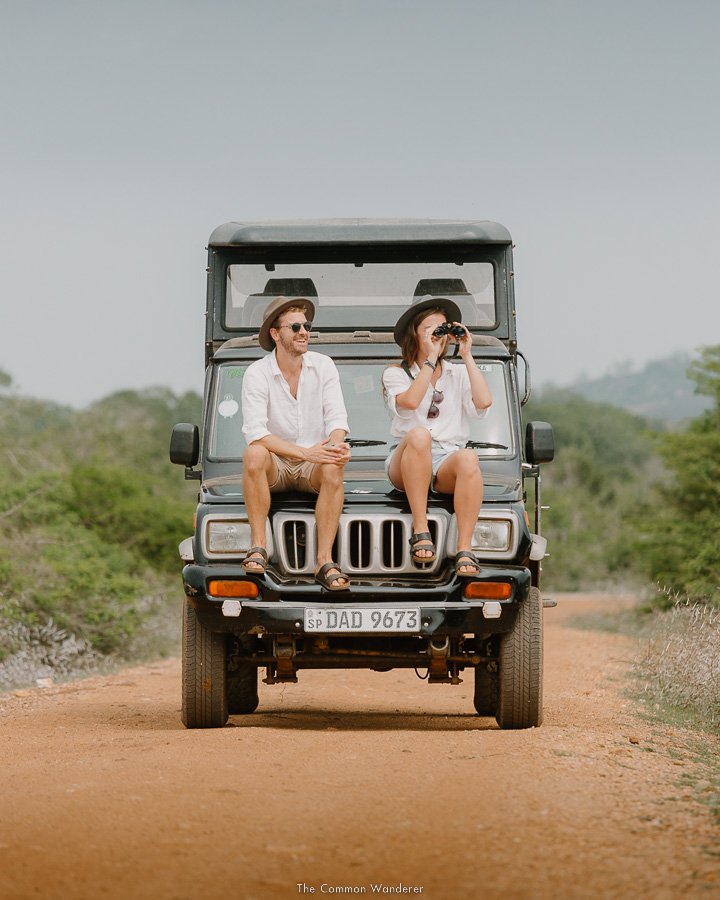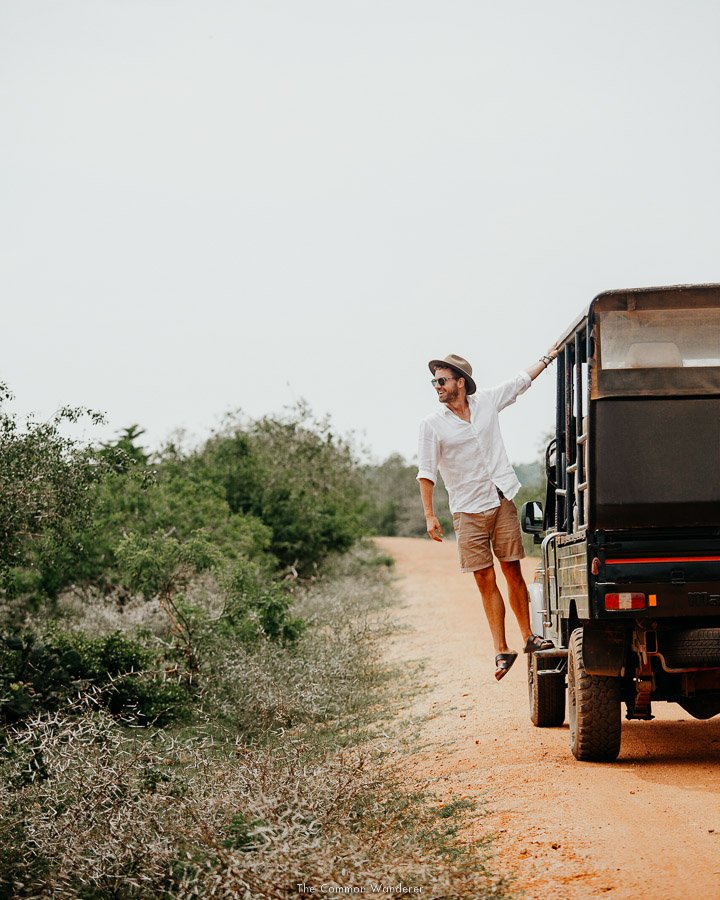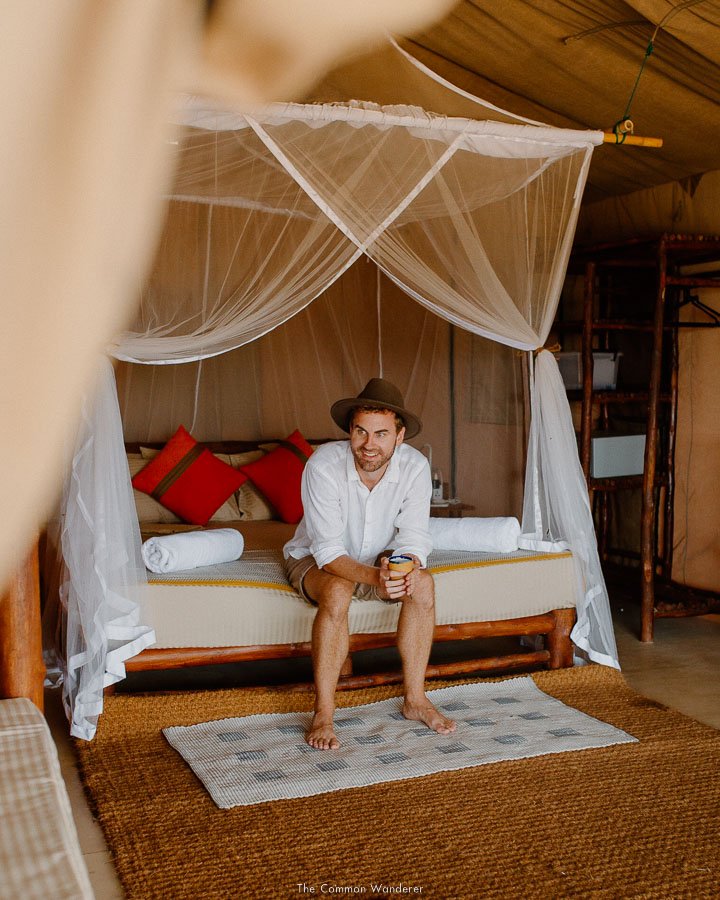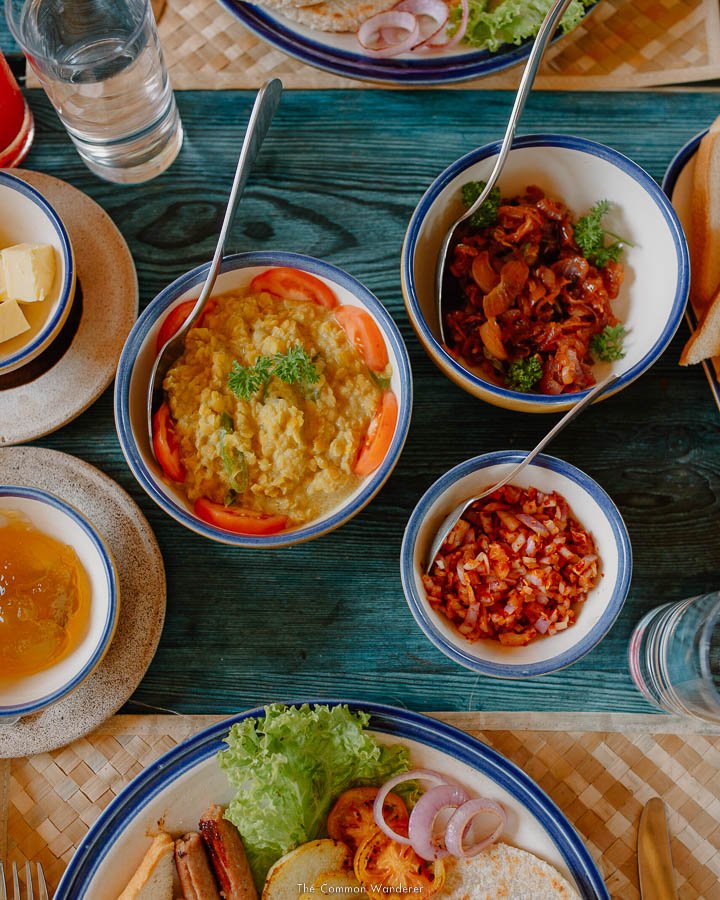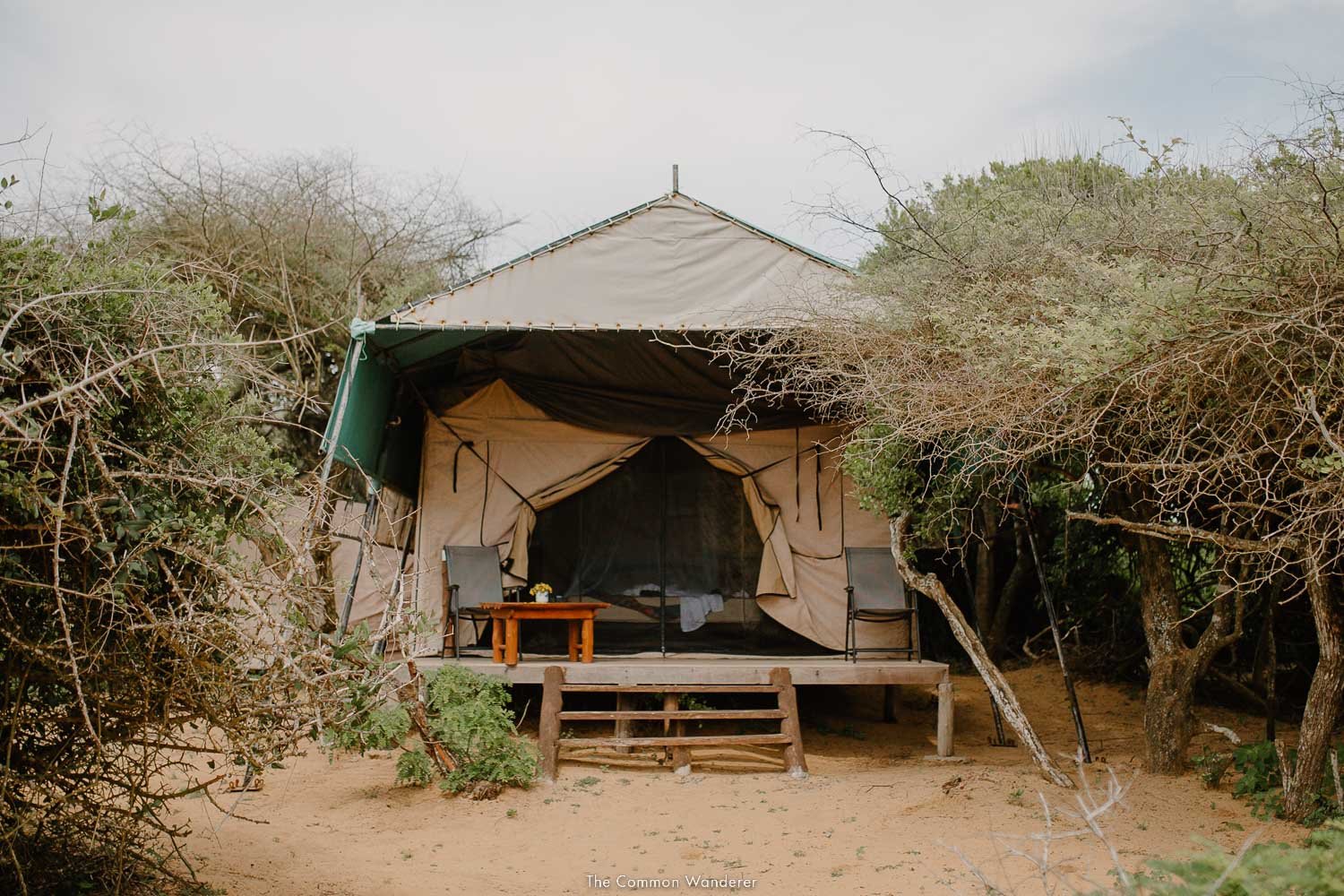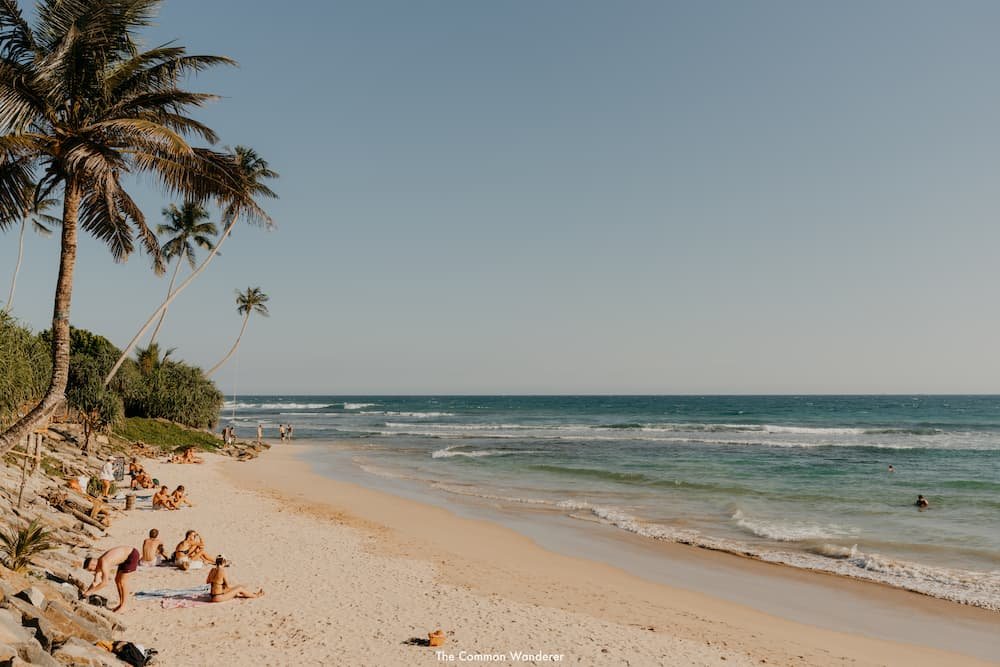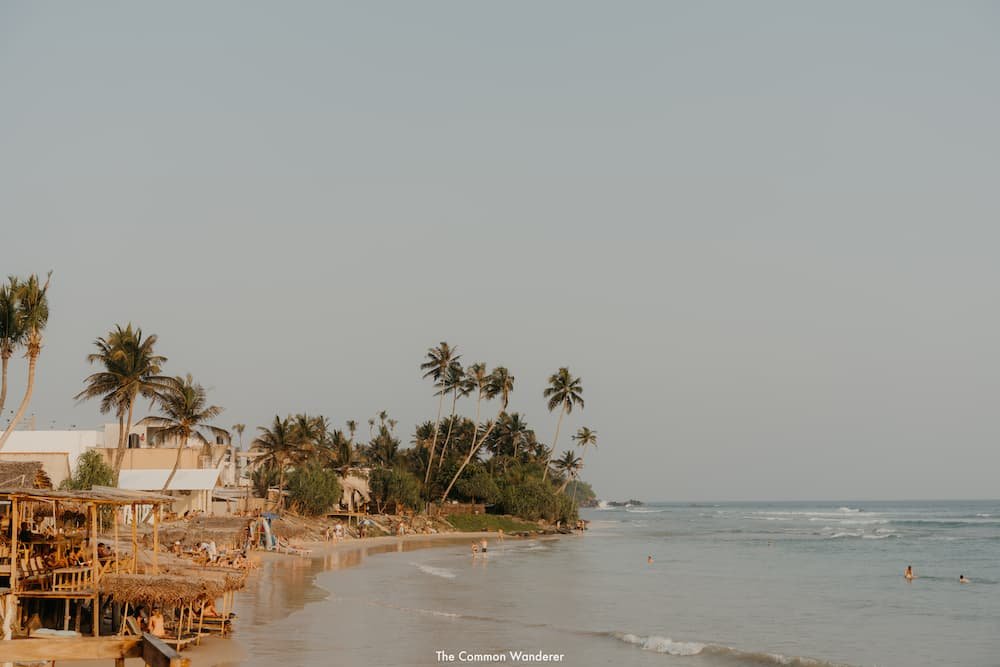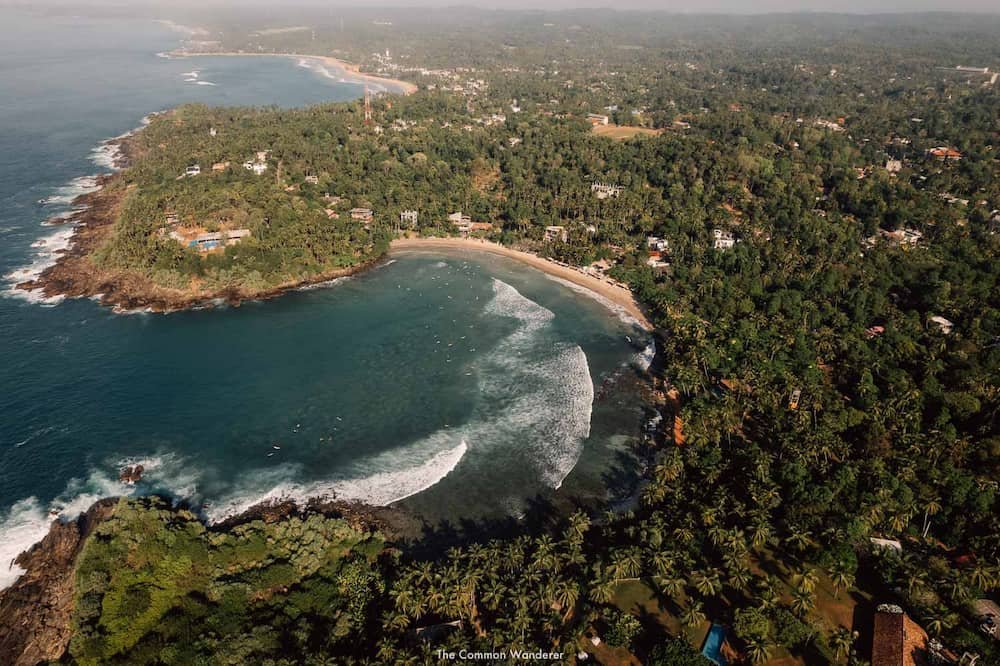How to Visit Yala National Park, Sri Lanka's Incredible Wildlife Sanctuary
Discover the beauty of Yala National Park with our guide on how to visit. Plan your safari adventure with our detailed overview of the park, including the park's history, wildlife, where to stay and the best time to visit. Start planning your safari adventure now!
Planning a trip to Sri Lanka? Then a safari in Yala National Park is absolutely essential.
Yala National Park straddles the empty southeastern coastline of Sri Lanka and the1268sq km park is home to a rich array of dunes, forests, open plains and lush lagoons, which also attracts a huge diversity of wildlife; 44 mammal species (including elephants) and over 215 bird species, to be exact!
For travellers, a visit to Yala National Park offers the chance to see Leopards and Elephants in the wild - Yala contains one of the largest densities of Leopards in the world, with an estimated 25 leopards roaming Block 1 alone.
If you’ve dreamed of spotting these glorious creatures in the wild, a safari in Yala is absolutely your best chance to witness the elusive cats, while an elephant sighting is basically a given. Which, in a country the size of Sri Lanka, is absolutely incredible.
This article will you plan the perfect visit to Yala National Park. On top of providing context and history to your visit, we provide you with all the insider information to plan the perfect trip, including how to get there, where to stay, and tips to help you make the most of your safari.
LOVE OUR PHOTOS? Edit like us with our Tropical Dreams Preset Packs, and Tropical Bliss mobile video filters, inspired by the tropical beauty and colour of this beautiful country
YALA NATIONAL
PARK OVERVIEW
WHERE | South-Western Sri Lanka
WHAT TO SEE | Leopards (hopefully!), Elephants, incredible natural beauty
SAFARI FEES | Around $75 USD for a full day safari
OPENING HOURS | 6 am daily
HOW TO GET THERE | Local bus, Taxi, tuk-tuk, private transfer
YALA NATIONAL PARK HISTORY
The most popular, and second largest national park in the country, Yala’s history as a conservation hotspot in Sri Lanka’s east is long, dating back to the early 20th century when it was first established as a wildlife sanctuary.
Home to a diverse array of flora and fauna, including many endangered species such as elephants, leopards, and a variety of bird species, the area was declared a national park in 1938.
In the 1970s and 1980s, the park was adversely affected by poaching and the illegal trade of wildlife, but thankfully, conservation efforts by the Sri Lankan government and various non-governmental organizations helped to protect and restore the park's ecosystem.
The 2004 Indian Ocean Tsunami has had an adverse effect on the national park, severely altering the natural characteristics of the park, with many humans being swept away.
Thankfully, the park has recovered from this terrible tragedy to become one of the most popular and accessible destinations in Sri Lanka, and the world, for those seeking to see elephants and leopards up close.
The park is divided into five different zones, each with its own unique characteristics and wildlife. The most popular zones are 1 and 5, which are known for their high concentration of wildlife, especially leopards. You can enter the park through various gates, but the most popular one is the Palatupana entrance.
This gate is located near the town of Tissamaharama and is the easiest to access by public transportation.
Not only is Yala National Park an incredible place to see wild animals but it's also rich in cultural history with well-preserved ancient temples, including Sithulpahuwa and Magul Vihara, situated within the park. Pretty damn cool if you ask us.
YALA NATIONAL PARK SAFARI | WHAT TO EXPECT
Our Yala national park safari started the moment we stepped off the bus in Tissamaharama. Confronted with around 10 safari jeeps and 20+ guides searching for our business, it felt like the Sri Lankan version of the wild west.
After a quick lunch, we randomly started a conversation with some local guys who hooked us up with a safari. They were young, cool and seemed like a lot of fun - not exactly the prerequisite for a brilliant safari, but we booked with them anyway and arranged a pick up for 4 am the next day.
The alarm felt like a slap in the face, especially considering we were staying the gorgeous Back of Beyond camp just outside the park, and our bed was delightfully comfortable. We quickly got ready, met our effusive guides, and set off in the pitch dark, bound for the park gates.
Joining a long cue of many other jeeps, we managed a short nap before the heavy diesel engine shook into gear and we made our way through the Zone #1 gates for our safari.
The first thing we noticed was the flora - it felt like the plains of Africa - flat, with spindly trees and scattered grassland as far as the eye could see. The air was humid, and the cloud cover was low and grey as far as the eye can see - one of the negatives of visiting during the NE monsoon season. Alas, it was beautifully green.
We drove deep into the park, following the ochre-coloured road with great anticipation. Our first animal sightings were not exactly what we can see, but wonderful nonetheless - a range of migratory birds, water buffalo, and spotted dear. Or, in other words, leopard fodder.
Then we got word of a leopard spotting.
Our driver and guide made a quick dash east to see if we could spot it ourselves. And sure enough, in the far distance, a majestic leopard sat atop a rock, enjoying a nap as we wished to. Despite the distance, we observed the animal for a good 30 minutes, bursting with excitement with every movement.
Before long, it started to move deeper into the forest, no doubt spooked by the very many jeeps that arrived and jostled for position over the preceding 20 minutes (this is the one downside of Yala, as we explain in further detail below).
Escape the crush, we set off on our own - this time in search of elephants. We drove the windy, dirt roads, encountering more buffalo, crocodiles and other small fauna before we stumbled across an elephant family at a large watering hole. Despite having seen elephants a lot in our travels, seeing these alien-like behemoths again is always an exciting experience.
Engine off, we could hear each form of communication - the grunts and huffs and trumpets, and it was utterly wonderful.
As the only jeep around, we observed the family for a good 15 minutes, our guides teaching us all about elephant behaviour before other jeeps arrived.
This encounter was our last for a while, as we drove to Patanangala Beach picnic area for a break and walk on the beach. It was here the raw and rugged nature of the park really came to life - the heavy sea, and the vast rocky outcrops intersecting with the vast national park. It was an exceptionally beautiful place.
After the stop, we encountered a further few elephants, but no more leopard sightings, before making our way outside of the park, content, yet yearning for more.
Overall, the safari was a wonderful experience, and our disappointment in not seeing a leopard up close was somewhat limited by the incredible elephant encounter.
Now, all safari experiences will be different, so remember to lower your expectations and don’t expect to see leopards and elephants.
The most popular zones are 1 and 5 due to the incredible flora and fauna, and the highest chance of spotting animals, so we suggest making sure your safari is within one of these two zones when booking (don’t worry, most are).
THINGS TO KNOW BEFORE VISITING YALA NATIONAL PARK
DO YOU NEED A GUIDE TO VISIT YALA NATIONAL PARK?
One of the most common questions we get asked is whether to hire a Yala National Park guide or not. And our answer is always a yes!
Having a guide with you means you will have better chances of seeing the incredible animals that call the park home (book your guided tour of Yala here).
Think of your Yala National Park guide as a personal key that unlocks the secrets of the park. Not only will they know the best routes to take and prime spots to visit but they’ll also be able to point out animals and plants that you might miss on your own. And you’ll miss a LOT.
These guys are well-versed around the park and can take you to the most scenic and animal-rich areas, as well as give you an exclusive glimpse into the park’s wild world.
They’re also in constant communication with other safari drivers, which means you are more likely to hear about animal sightings happening in other parts of the park, especially leopards.
Furthermore, having an experienced and knowledgeable guide is a small investment that can make your visit to Yala National Park, even more, fun and interesting.
BOOK | This highly-rated golden hour guided safari, or this full day safari with lunch
WHAT ANIMALS WILL YOU SEE ON A YALA NATIONAL PARK SAFARI
The real star of the show is the leopard. With a high chance of sightings, Yala National Park is one of the best places in the world to see these majestic animals in their natural habitat. They can be a bit more elusive, but with a little patience and a sharp eye, you will be able to spot one or two.
Gracefully roaming around the park, elephants are another sight to behold making Yala National Park safari a great way to get up close and personal with these gentle giants.
Keep your camera ready because there are many other animals to be seen: playful monkeys crashing through the trees, timid deer hiding in the bushes, and huge crocodiles basking on the banks of rivers.
Bird lovers among you will be thrilled to know that Yala National Park is home to more than 200 bird species. From the colourful peacocks to the fierce eagles, there are plenty of opportunities for bird watching during your visit.
With so much wildlife to be discovered, don’t forget to bring your binoculars and telephoto zoom lens.
WHERE IS YALA NATIONAL PARK, AND HOW TO GET TO THERE
Located in the southeast region of Sri Lanka, between the powerful Indian Ocean on one side and luscious jungles on the other side, Yala National Park is a must-see for anyone visiting Sri Lanka.
There are different ways to reach the park, depending on from which city you are starting the journey.
However, the bus journey is still the most budget-friendly option, connecting the nearby cities with Tissamaharama town quite well.
FROM THE SOUTHERN COAST (MIRISSA, HIRIKETIYA) TO TISSAMAHARAMA
Bus journey | Mirissa – Matara – Tissamaharama
Cost | Around 0,83 euros (330 LKR)
Travel time | Around 3.5 hours
FROM ELLA TO TISSAMAHARAMA
Bus journey | Ella – Tissamaharama
Cost | Around 0,55 euros (218 LKR)
Travel time | Around 2.5 hours
WHEN IS THE BEST TIME TO VISIT YALA NATIONAL PARK
As we explain in our ‘39 things to know before visiting Sri Lanka’ post, the Island experiences not just one, but two monsoon periods each year, affecting opposite sides of the island and alternate times of the year.
The dry season, which runs from February and July, really is the only time to visit Yala National Park, as the lack of water means plenty of wildlife to be seen around reservoirs.
We visited in November, just as the park was reopened, and while it was abundantly green from the northeastern monsoon, we would suggest going on a Yala National Park safari during the dry season, between February and July, when the wildlife viewing possibilities are better due to the relative lack of water.
Keen to see a leopard? Between April and July, the water levels are low, which means the leopards are more active and more visible. That being said, we saw one during our visit in November.
Bird watchers might prefer a period from November to January when numerous migratory birds can be seen.
Finally, the park can be quite crowded (and we mean crowwwwwded!) between December and April, so if you’d like to have a more peaceful Yala National Park safari experience, consider visiting during the off-peak months.
Regardless of the season you choose, be sure to book a safari early in the morning or late in the afternoon as the animals are most active during this time of the day.
NOTE | The park is closed for a month from September to October for the annual maintenance/drought prevention
YALA NATIONAL PARK SAFARI COST
From jeep rentals to guide fees, there are several costs to consider when planning your Yala National Park safari trip.
First, there are jeep safari fees that can be pre-booked online and vary depending on the zones you're visiting. On average, you will pay 42 euros for a half-day tour and 69 euros for a full-day tour in zone 1.
These prices are per jeep with a maximum of 6 people, so if you want to save some money, join a larger group. Also, haggling is a must, just like in the rest of the country. It doesn’t hurt to try and you can get a much more affordable rate.
Additionally, you’ll need to buy entry tickets at the gate (expect to pay around 10 euros per person).
Finally, we suggest booking your Yala National Park safari before arriving at the park, so you know the quality of the operator and guides. You can book this popular Yala safari here. Alternatively, safari tours can easily be organised through your accommodation so don’t hesitate to ask your hotel staff for help.
FULL DAY | Around 69 euros (27,000 - 28,000 LKR)
MORNING | 6 am – 10 am, around 42 euros (16,000 – 17,000 LKR)
AFTERNOON | 2 pm – 6 pm, around 42 euros (16,000-17,000 LKR)
You can enter the park through various gates, but the most popular one is the Palatupana entrance. This gate is located near the town of Tissamaharama and is the easiest to access by public transportation.
BOOK | This highly-rated golden hour guided safari, or this full day safari with lunch
NOTE | The park usually closes every September for maintenance
HOW LONG SHOULD YOU SPEND IN YALA NATIONAL PARK?
It is certainly possible to see a lot in just one day.
A morning or an afternoon safari can give you a good taste of what the Yala National Park has to offer. But if you're looking for the ultimate park experience, plan to stay at least 1 night/two days.
Trust us, two days in this natural wonderland is just enough to fully immerse yourself in all the sights and sounds the park has to offer.
Plus, you will have more time to explore the park's different habitats, which increases your chances of seeing a variety of animals.
IS YALA NATIONAL PARK WORTH VISITING?
If you want to see elephants and leopards in their natural habitat, with little fuss (or an expensive trip to Africa), then Yala National Park is an essential place to visit in Sri Lanka (as is Udawalawe National Park).
It boasts some of the most stunning scenery in Sri Lanka. Lush green forests in combination with wild seas, sparkling lakes and rivers are a real visual feast.
Add an abundance of animals, including leopards (this is the best place to see them in their natural habitat!), elephants, crocodiles, and an impressive variety of birds, and you have The Jungle Book brought to real life.
Being set in a unique position on the coast, Yala National Park offers a one-of-a-kind experience that you won't find anywhere else.
Imagine sleeping under the stars and waking up to the sounds of the wild while the sun rises over the park. Sounds surreal, right? Well, in Yala National Park these dreams do come true!
All the high-end accommodation is a perfect blend of nature and modern comfort with a touch of luxury. Opt for deluxe tents or elegant bungalows, and experience the park in style.
Most importantly, getting to the park is relatively easy, with several transportation options from different parts of Sri Lanka.
THINGS TO KNOW BEFORE VISITING YALA NATIONAL PARK
As one of the most stunning and diverse wildlife reserves in the world, Yala National Park can be quite a busy place and sometimes uncomfortable so, especially during peak season, so try to visit during the shoulder seasons to avoid the crush.
Photographers, make sure to pack a telephoto zoom lens. The park is home to an incredible diversity of wildlife that you'll want to be able to capture in all its glory. With a telephoto zoom lens, you can get up close and personal with the animals without disturbing them.
If you're joining a morning safari, be ready to hit the road early. The park opens at 6 am and you'll want to get in first so set your alarm on time! Also, morning safaris can be quite chilly so bring a jacket or a sweater.
Pack some snacks and water. It's always a good idea to have something to munch on while you're out exploring. Keep in mind that there are no toilets in the park so don’t over-hydrate.
Last but not least, don't leave the house without sunscreen and repellent. It can be very hot and sunny without tons of bugs so you'll want to protect yourself.
READ MORE | Our top Sri Lanka travel tips
WHERE TO STAY IN YALA NATIONAL PARK
Search and book Yala National Park accommodation here
SRI LANKA PACKING ESSENTIALS
Travelling through Sri Lanka comes with a unique set of needs.
To help you have a comfortable, happy journey, we recommend bringing the following items with you:
REUSABLE WATER BOTTLE | THE BEST INVESTMENT WE’VE EVER MADE! We use the Grayl water purification bottles, which allow us to fill up from any water source, anywhere in the world (including train taps!)
A TOTE BAG | The humble tote is a versatile little lifesaver when on the road. They're plastic-free, small, easily foldable, and can pack a surprising amount! Check out this range of beautifully designed, personalisable totes bags here
BIODEGRADABLE WET WIPES | Keep clean without destroying the planet!
HAND SANITISER | This is not something we’d actually recommend normally, but we now live in Covid times... so this can be a bloody great investment
INTERNATIONAL TRAVEL ADAPTER | You’ll need the correct plug to keep your gear going!
POWER BANK | Don’t get caught out without power for your devices
EYE MASK | For those annoyingly early sunrises!
BIO-FRIENDLY TOILETRIES | Avoid damaging and chemical-heavy products and facial scrubs with microbeads altogether. We recommend Lush solid shampoo, conditioner and body wash bars, ocean-friendly sunscreen (Stream2Sea), a mooncup is a great investment for “that” week and Lip balm for the sun
TRAVEL INSURANCE | STAY SAFE IN SRI LANKA
If you can't afford travel insurance, you really can't afford to travel. As the current global situation has taught many people, things can go wrong anywhere in the world - and insurance is often the only way of mitigating any issues with minimal expense or stress for you.
FOR ALL TRAVELLERS | HeyMondo - COVID-19 coverage, comprehensive travel + medical insurance, an app with 24-hour medical support, and no out-of-pocket fees. *Get 5% off your policy by booking through our link here.
FOR DIGITAL NOMADS| SafetyWing - COVID-19 coverage, comprehensive travel & medical, and policies can be purchased while already abroad.
CAR INSURANCE | Insurance4CarHire - a great annual car insurance policy
EXPERIENCE THE BEST OF SRI LANKA
SRI LANKA TRAVEL TIPS | 31 incredible things to do in Sri Lanka, Our essential 3-week Sri Lanka Itinerary, Our 7-day Sri Lanka Itinerary, Everything you need to know before you visit Sri Lanka (39 essential tips!), Where to stay in Galle
SRI LANKA CITY GUIDES | We’ve got in-depth guides to Colombo, Galle, Kandy, Jaffna, Hiriketiya, Mirissa Beach
CULTURAL ATTRACTIONS | Our essential guides to both Sigiriya and Pidurangala, A guide to Polonnaruwa, How to visit Yala National Park, and Udawalawe National Park
TRANSPORT GUIDES | Our definitive guide to the Kandy to Ella train, how to get from Colombo to Kandy, how to get from Colombo to Galle
ELLA, SRI LANKA | Our complete guide to Ella, a guide to the Nine Arch Bridge, How to see Diyaluma Falls, Ella accommodation options for every budget (+ our recommendations)
PHOTOGRAPHY | Love our photography? Read our detailed photography gear guide, as well as our top travel photography tips!
RESPONSIBLE TRAVEL | Responsible travel is important. REALLY IMPORTANT. Learn our top responsible travel tips to help you, your family and your friends travel more consciously around the globe
ECO-FRIENDLY PACKING ESSENTIALS | Don’t leave home without our favourite eco-friendly travel essentials
DISCOVER THE BEAUTY OF SRI LANKA WITH OUR GUIDES
Some of the links on this Yala National Park safari guide are affiliate links.
If you choose to purchase using these links, we receive a small commission at no extra cost to you. Please know that by using these affiliate links, you're directly supporting The Common Wanderer to stay wandering, the running costs of the site, and our ability to provide you with free content to help you on your travels.
That, and you're officially a legend.

